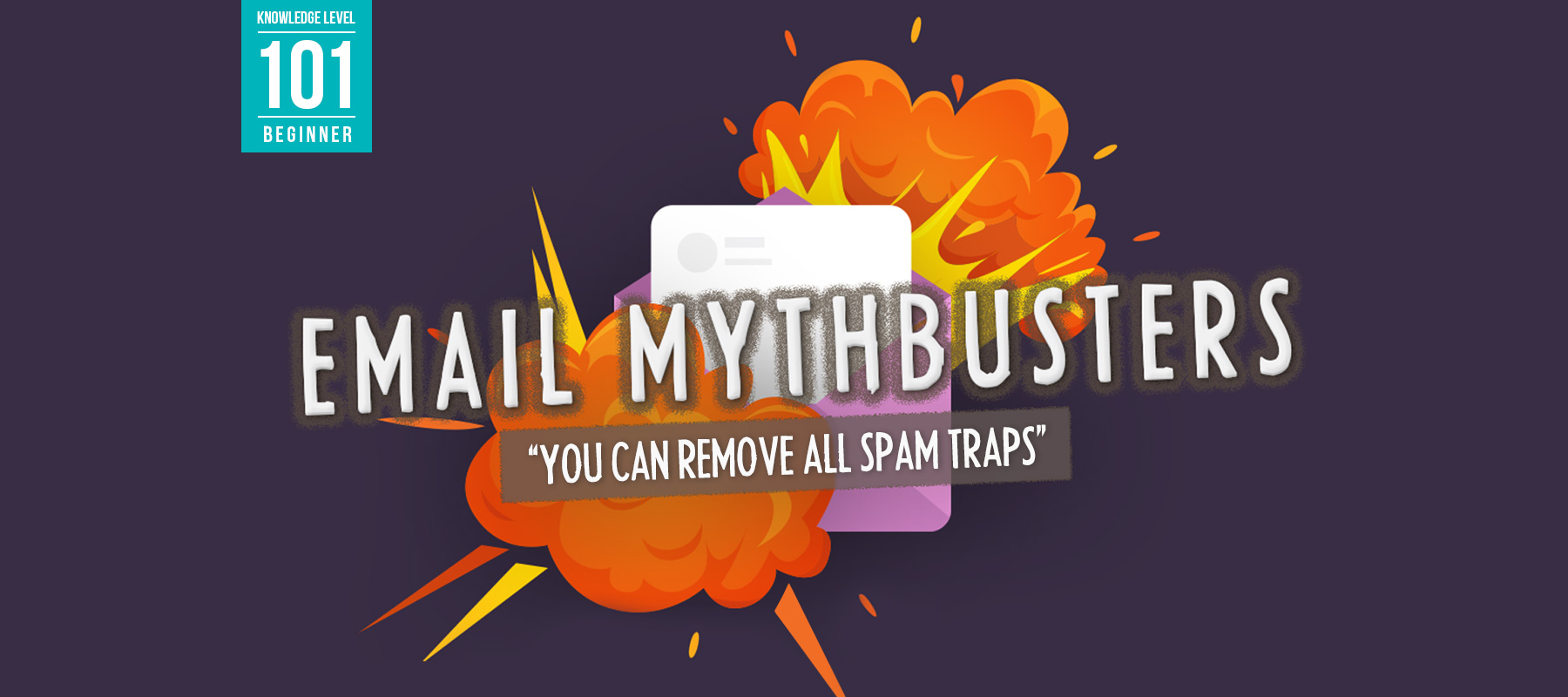
There are more than a few myths floating around the industry about seemingly magical quick fixes for removing spam traps from your subscriber list. While that would be great, unfortunately these claims are not true. To understand why this simply is not the case, let’s dive into what a spam trap is, the purpose of these pesky email addresses, and how you can avoid them in the future.
What is a spam trap?
The truth about spam traps is, well, they are valid email addresses. This is why quickly identifying these malicious addresses in your list is next to impossible. Ultimately, your efforts are going to be much better spent on fixing the fundamental issue(s) causing these email addresses to show up on your list in the first place. It’s important to recognize while spam traps might be a nuisance to senders, they have a very specific purpose for the mailbox providers – to catch bad senders. The number of spam traps a sender hits is factored heavily into IP and domain reputation, which are key factors evaluated by mailbox providers in determining whether to filter mail to the spam folder. Some blocklists even monitor spam trap activity and will block senders if they send to one. Overall, it’s very important to find the root cause of these pesky little addresses to ensure the problem is truly resolved, as opposed to falling victim to a false “quick fix.” In order to recover your sender reputation and increase the probability of your mail being delivered to the inbox, this issue should not be ignored.
To make things even more complicated, not all spam traps are created equal. In fact, there are two different types of spam traps that can end up in your subscriber list:
- Recycled spam traps. These are intended to catch senders with poor hygiene practices. Recycled spam traps are created from unknown user email addresses, so while an email address could have been a valid address when you first acquired it, if you haven’t sent an email to it in quite some time or you didn’t remove it from your list after it became inactive, this email address could have been converted into a spam trap by the mailbox provider. You shouldn’t continue sending to this address not only because you are not reaching a real subscriber, but now you have jeopardized your sender reputation. These problems are serious, but not as serious as the ones resulting from pristine trap hits.
- Pristine spam traps. If these two spam traps were siblings, pristine spam traps would be the evil twin of the two. Pristine spam traps exist to catch senders who gather email addresses without consent. Although these email addresses are valid, they do not belong to an end subscriber. These email addresses are strategically placed in suspicious list acquisition sources (such as list purchasing, renting, or website scraping), and they reveal serious list acquisition problems to the mailbox providers and blocklists. This can ultimately have serious implications on your sender reputation and ability to make it to your actual subscribers’ inboxes.
How to Avoid Spam Traps
While there are services out there claiming to capture spam traps by keeping a running list of known spam trap addresses they’ve uncovered in the past, this cannot be 100% guaranteed just with the nature of how spam traps work. Can these services catch some spam traps? Sure. However, spam traps are ever-evolving, making them harder to catch. Just when you might’ve caught one trap, there are a hundred more newly created, eagerly waiting to pop up on your list. As a result, the only true way to avoid obtaining spam traps on your list is to optimize your list acquisition and hygiene practices. Here are some recommendations to immediately start implementing:
- Provide subscribers an option to explicitly opt into your email program with either a confirmed or double opt-in process. Be sure to state the benefits of receiving your emails to motivate subscribers to provide their valid email address.
- Avoid purchasing, renting, or scraping websites for email addresses. On top of being a practice that is frowned upon, these sources are notorious for hiding spam traps within their lists.
- Tag all subscribers based on their acquisition source and monitor unknown user and spam trap activity within Everest to uncover acquisition sources that could be causing your spam trap issue.
For more tips on how to monitor spam traps and blocklists, check out this blog.
If you find that you’ve hit a spam trap, don’t give up on your email program just yet. While these addresses can harm your sender reputation, if you begin to take action on improving your email sending practices and pinpoint the root cause of the spam trap, you are headed in the right direction. While you are improving your strategies, be sure to also monitor your subscriber engagement metrics, bounce logs, and your sender reputation metrics within Everest in order to get a holistic view of the health of your email program